Italian language
| Italian | ||
|---|---|---|
| Italiano | ||
| Pronunciation | [itaˈljano] | |
| Spoken in | ||
| Region | Southern Europe | |
| Total speakers | 70 million native 125 million as second language |
|
| Ranking | 20 | |
| Language family | Indo-European | |
| Writing system | Latin alphabet | |
| Official status | ||
| Official language in | ||
| Regulated by | not officially by Accademia della Crusca | |
| Language codes | ||
| ISO 639-1 | it | |
| ISO 639-2 | ita | |
| ISO 639-3 | ita | |
| Linguasphere | ||
| Note: This page may contain IPA phonetic symbols in Unicode. | ||
Italian (italiano, or lingua italiana) is a Romance language spoken as a native language by about 70 million people in Italy, San Marino and parts of Switzerland, Croatia, Slovenia and France.[1] In addition, it is spoken by an additional 120 to 150 million people as a non-native language.[2] Most native speakers are native bilinguals of both standardised Italian and regional varieties.[3]
In Switzerland, Italian is one of four official languages, spoken mainly in the Swiss cantons of Grigioni and Ticino. It is also the official language of San Marino, as well as the primary language of Vatican City.[4] The Italian language adopted by the state after the unification of Italy is based on the Tuscan dialect, which beforehand was only available to upper class Florentine society.[5] Its development was also influenced by other Italian dialects and by the Germanic language of the post-Roman invaders.
Italian derives diachronically from Latin and is the closest national language to Latin. Unlike most other Romance languages, Italian retains Latin's contrast between short and long consonants. As in most Romance languages, stress is distinctive. In particular, among the Romance languages, Italian is the closest to Latin in terms of vocabulary.[6] Lexical similarity is 89% with French, 87% with Sardinian, 85% with Catalan, 82% with Spanish, 78% with Rhaeto-Romance and 77% with Romanian.[1][7]
Contents |
History
The Italian language has a long history, but the modern standard of the language was largely shaped by relatively recent events. The earliest surviving texts that can definitely be called Italian (or more accurately, vernacular, as distinct from its predecessor Vulgar Latin) are legal formulae from the region of Benevento that date from 960-963.[8] What would come to be thought of as Italian was first formalized in the first years of the 14th century through the works of Dante Alighieri, who mixed southern Italian languages, especially Sicilian, with his native Florentine in his epic poems known collectively as the Commedia, to which Giovanni Boccaccio later affixed the title Divina. Dante's much-loved works were read throughout Italy and his written dialect became the "canonical standard" that all educated Italians could understand. Dante is still credited with standardizing the Italian language and, thus, the dialect of Florence became the basis for what would become the official language of Italy.
Italian was often an official language of the various Italian states pre-dating unification, slowly usurping Latin, even when ruled by foreign powers (such as the Spanish in the Kingdom of Naples, or the Austrians in the Kingdom of Lombardy-Venetia), even though the masses spoke primarily vernacular languages and dialects. Italian was also one of the many recognised languages in the Austro-Hungarian Empire.
Italy has always had a distinctive dialect for each city since the cities were, until recently, thought of as city-states. Those dialects now have considerable variety, however. As Tuscan-derived Italian came to be used throughout Italy, features of local speech were naturally adopted, producing various versions of Regional Italian. The most characteristic differences, for instance, between Roman Italian and Milanese Italian are the gemination of initial consonants and the pronunciation of stressed "e", and of "s" in some cases (e.g. va bene "all right": is pronounced [va ˈbːɛne] by a Roman (and by any standard-speaker, like a Florentine), [va ˈbene] by a Milanese (and by any speaker whose native dialect lies to the north of La Spezia-Rimini Line); a casa "at home": Roman and standard [a ˈkːasa], Milanese and generally northern [a ˈkaza]). (See Raddoppiamento fonosintattico).
In contrast to the Northern Italian language, southern Italian dialects and languages were largely untouched by the Franco-Occitan influences introduced to Italy, mainly by bards from France, during the Middle Ages but, after the Norman conquest of southern Italy, Sicily became the first Italian land to adopt Occitan lyric moods (and words) in poetry. Even in the case of Northern Italian language, however, scholars are careful not to overstate the effects of outsiders on the natural indigenous developments of the languages. (See La Spezia-Rimini Line).
The economic might and relatively advanced development of Tuscany at the time (Late Middle Ages), gave its dialect weight, though Venetian language remained widespread in medieval Italian commercial life, as well as Ligurian (or Genoese) remained in use in maritime trade alongside the Mediterranean. Also, the increasing political and cultural relevance of Florence during the periods of the rise of Medici's bank, Humanism and the Renaissance made its dialect, or rather a refined version of it, a standard in the arts.
Middle Ages
The re-discovery of Dante's De vulgari eloquentia and a renewed interest in linguistics in the 16th century sparked a debate that raged throughout Italy concerning the criteria that should govern the establishment of a modern Italian literary and spoken language. Scholars divided into three factions:
- The purists, headed by Pietro Bembo (who in his Gli Asolani claimed the language might only be based on the great literary classics...notably, Petrarch and Boccaccio). The purists thought the Divine Comedy not dignified enough because it used elements from non-lyric registers of the language.
- Niccolò Machiavelli and other Florentines preferred the version spoken by ordinary people in their own times.
- The courtiers, like Baldassarre Castiglione and Gian Giorgio Trissino, insisted that each local vernacular must contribute to the new standard.
A fourth faction claimed the best Italian was the one the papal court adopted. Eventually, Bembo's ideas prevailed, and led to publication of the first Italian dictionary in 1612 and the foundation of the Accademia della Crusca in Florence (1582-3), the official legislative body of the Italian language.
Modern era
Two notable defining moments in the history of the Italian language came between 1500 and 1850. Both events were invasions. The rulers of Spain invaded and occupied Italy down to Rome and the Vatican in the mid-16th century (see the aftermath of the Italian Wars). This occupation left a lasting influence upon the formerly irregular Italian grammar, simplifying it to conform more with the dominant Spanish language. The second was the conquest and occupation of Italy by Napoleon in the early 19th century (who was himself of Italian-Corsican descent). This conquest propelled the unification of Italy, and pushed the Italian language into a lingua franca. The increased unity among people on the Italian peninsula weakened many regional languages.
Contemporary times
Italian literature's first modern novel, I Promessi Sposi (The Betrothed), by Alessandro Manzoni further defined the standard by "rinsing" his Milanese "in the waters of the Arno" (Florence's river), as he states in the Preface to his 1840 edition.
After unification a huge number of civil servants and soldiers recruited from all over the country introduced many more words and idioms from their home languages ("ciao" is Venetian, "panettone" is in the Milanese dialect of the Lombard language etc.). Only 2.5% of Italy’s population could speak Italian language when the nation unified in 1861.[9]
Classification
Italian is most closely related to the other two Italo-Dalmatian languages, Sicilian and the extinct Dalmatian. The three are part of the Italo-Western grouping of the Romance languages, which are a subgroup of the Italic branch of Indo-European.
Geographic distribution


The list below shows the geographical distribution of the Italian language around the world. The total number of native speakers of Italian are between 65 and 75 million people.[10][11] Those who speak Italian as a second or cultural language are estimated to be between 120 and 150 million people.[11]
Official:
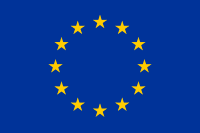 European Union
European Union Italy
Italy San Marino
San Marino Sovereign Military Order of Malta
Sovereign Military Order of Malta Switzerland
Switzerland Vatican City
Vatican City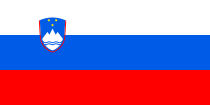 Slovenia (only in Slovenian Littoral)
Slovenia (only in Slovenian Littoral)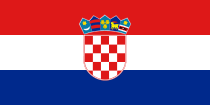 Croatia (only in Istria County)
Croatia (only in Istria County)
Historical Significance in:
 France (in Corsica, Savoy, Nice) and some valleys
France (in Corsica, Savoy, Nice) and some valleys Albania
Albania Croatia (Istria, Rijeka, Kvarner, Dalmatia)
Croatia (Istria, Rijeka, Kvarner, Dalmatia) Malta
Malta Monaco
Monaco Montenegro
Montenegro Greece (in Dodecanese 1912-1943)
Greece (in Dodecanese 1912-1943)
Historically official:
 Italy (in Italian Social Republic 1943-1945 and in Free Territory of Trieste 1947–1954)
Italy (in Italian Social Republic 1943-1945 and in Free Territory of Trieste 1947–1954) Eritrea (1890–1941)
Eritrea (1890–1941) Somalia (Italian Somaliland 1895-1960, British Somaliland 1940-1941)
Somalia (Italian Somaliland 1895-1960, British Somaliland 1940-1941) Ethiopia (Abissinia 1936-1941)
Ethiopia (Abissinia 1936-1941) China (in Tientsin 1901-1944)
China (in Tientsin 1901-1944) Libya (1911–1943)
Libya (1911–1943) Egypt (in Western part 1940-1942)
Egypt (in Western part 1940-1942) Croatia (in Istria, Rijeka, Zadar and some islands 1919-1947, in Dalmatia 1941-1943)
Croatia (in Istria, Rijeka, Zadar and some islands 1919-1947, in Dalmatia 1941-1943) Slovenia (Istria (1919-1947, Province of Ljubljana 1941-1943)
Slovenia (Istria (1919-1947, Province of Ljubljana 1941-1943) Greece (in Dodecanese 1912-1943 and in the Ionian Islands 1941-1943)
Greece (in Dodecanese 1912-1943 and in the Ionian Islands 1941-1943) Albania (1938–1945, Sazan Island 1920-1947)
Albania (1938–1945, Sazan Island 1920-1947) Malta (until 1934)
Malta (until 1934) France (in Tende, La Brigue and other small valleys until 1947, in Corsica and territory of Nice 1942-1943)
France (in Tende, La Brigue and other small valleys until 1947, in Corsica and territory of Nice 1942-1943)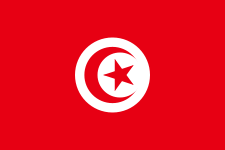 Tunisia (1942–1943)
Tunisia (1942–1943) Austria-Hungary (until 1918)
Austria-Hungary (until 1918) Turkey (in Territory of Antalya 1919-1922)
Turkey (in Territory of Antalya 1919-1922)
Used by some immigrant communities in:
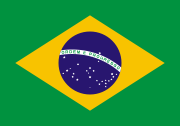 Brazil 1,500,000[12]
Brazil 1,500,000[12]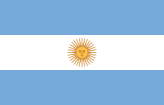 Argentina 1,500,000[13]
Argentina 1,500,000[13] Uruguay
Uruguay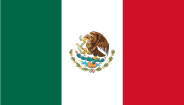 Mexico
Mexico USA 1,008,370[14]
USA 1,008,370[14] France 500,000-1,000,000
France 500,000-1,000,000 Canada 661,000[15]
Canada 661,000[15] Germany 548,000[16]
Germany 548,000[16] Switzerland over 500,000
Switzerland over 500,000 Venezuela 400,000[17]
Venezuela 400,000[17] Australia 353,605[18]
Australia 353,605[18].svg.png) Belgium 250,000
Belgium 250,000 UK 200,000[19]
UK 200,000[19] Egypt 72,400[20]
Egypt 72,400[20]
Italian is the official language of Italy and San Marino, and one of the official languages of Switzerland, spoken mainly in the cantons of Ticino and part of Graubünden (Grigioni in Italian), which together are a region referred to as Italian Switzerland. It is also the official language with Croatian and Slovenian in some areas of Istria, where an Italian minority exists. In the cities of Santa Teresa and Vila Velha it enjoys official status alongside Portuguese, being "knighted" as an ethnic language. It is the primary language of the Vatican City and is widely used and taught in Monaco and Malta. It served as Malta's official language until the Maltese language was enshrined in the 1934 Constitution. It is also spoken to a significant extent in France, with over 1,000,000 speakers [21] (especially in Corsica and the County of Nice, areas that historically spoke Italian dialects before annexation to France), and it is understood by large parts of the populations of Albania and coastal Montenegro, reached by many Italian TV channels.
Italian is also spoken by some in former Italian colonies in Africa (Libya and Eritrea). However, its use has sharply dropped off since the colonial period. In Eritrea, Italian is widely understood.[22] In fact, for 50 years, during the colonial period, Italian was the language of education, but as of 1997[update], there is only one Italian-language school remaining, with 470 pupils. The name of the only Italian-language school in Eritrea is Scuola Italiana di Asmara,[23] which was also the only Italian-language school in Ethiopia, when Eritrea was a province of Ethiopia.[24] The number of Italian speakers may increase a little when the number of students at that school increases and because it is still spoken in commerce,[25] and Eritrea will be the only African nation where Italian is widely spoken and understood. In Libya, Italian has been wiped out by the Libyan Revolution's Arabization programs in education and media. In Egypt and Tunisia, it is mostly spoken by Italian Egyptians and Italian Tunisians and some professionals of non-Italian descent. In all of the above former Italian African colonies, most of the fluent Italian speakers are people who grew up in officially Italian-speaking nations, most especially Italy, and returned to Africa.
Italian and Italian dialects are widely used by Italian immigrants and many of their descendants (see Italians) living throughout Western Europe (especially France, Germany, Belgium, Switzerland, the United Kingdom and Luxembourg), the United States, Canada, Australia, and Latin America (especially Uruguay, Brazil, Argentina, and Venezuela).
In the United States, Italian speakers are most commonly found in five cities: Boston (7,000),[26] Chicago (12,000),[27] the Miami region (27,000),[28] New York City (140,000),[29] and Philadelphia (15,000).[30] According to the United States Census in 2000, over 1 million Italian Americans spoke Italian at home, with the largest concentrations—and nearly half of the total—found in the states of New York (294,271) and New Jersey (116,365).[31] In Canada, Italian is the fourth most commonly spoken language, with 661,000 speakers (or about 2.1% of the population) according to the 2006 Census. Particularly large Italian-speaking communities are found in Montreal (c. 179,000) and Toronto (c. 262,000).[15] Italian is also strongly visible in the Hamilton area. Italian is the second most commonly spoken language in Australia, where 353,605 Italian Australians, or 1.9% of the population, reported speaking Italian at home in the 2001 Census.[32] In 2001 there were 130,000 Italian speakers in Melbourne,[33] and 90,000 in Sydney.[34]
Italian language education
Italian is widely taught in many schools around the world, but rarely as the first foreign language; in fact, Italian generally is the fourth or fifth most taught foreign language in the world.[35]
In the United States, Italian is the fifth most taught foreign language after Spanish, French, German, and American Sign Language, respectively.[36] Throughout the world, Italian is the fifth most taught foreign language, after English, Spanish, French, and German.[37]
In the European Union, Italian is spoken as a mother tongue by 13% of the population or 65 million people,[38] mainly in Italy. In all of the EU, it is spoken as a second language by 3% of the population or by 14 million people. In addition, among EU states, the Italian language is most likely to be learned as a second language in Malta by 61% of the population, as well as in Croatia by 14% of the population, Slovenia by 12% of the population, Austria by 11% of the population, Romania by 8% of the population, and by France and Greece by 6% of the population.[38] Italian is also one of the national languages of Switzerland, which is not a part of the European Union.[39] Italian language is also well known and studied in Albania, another non-EU member, due to the historical and geographical proximity between the two countries.
Influence and derived languages
From the late 19th to the mid 20th century, thousands of Italians settled in Argentina, Uruguay, southern Brazil, and Venezuela, where they formed a very strong physical and cultural presence (see the Italian diaspora).
In some cases, colonies were established where variants of Italian dialects were used, and some continue to use a derived dialect. An example is Rio Grande do Sul, Brazil, where Talian is used, and in the town of Chipilo near Puebla, Mexico; each continuing to use a derived form of Venetian dating back to the 19th century. Another example is Cocoliche, an Italian-Spanish pidgin once spoken in Argentina and especially in Buenos Aires, and Lunfardo.
Rioplatense Spanish, and particularly the speech of the city of Buenos Aires, has intonation patterns that resemble those of Italian dialects, due to the fact that Argentina has had a continuous large influx of Italian settlers since the second half of the 19th century; initially primarily from Northern Italy; then, since the beginning of the twentieth century, mostly from Southern Italy.
Italian as a lingua franca
Starting in late medieval times, Italian language variants replaced Latin to become the primary commercial language in much of Europe and the Mediterranean Sea (especially the Tuscan and Venetian variants). This was consolidated during the Renaissance with the strength of Italian and the rise of humanism in the arts.
During the Renaissance, Italy held artistic sway over the rest of Europe. All educated European gentlemen were expected to make the Grand Tour, visiting Italy to see its great historical monuments and works of art. It thus became expected that educated Europeans would learn at least some Italian; the English poet John Milton, for instance, wrote some of his early poetry in Italian. In England, Italian became the second most common modern language to be learned, after French (though the classical languages, Latin and Greek, came first). However, by the late 18th century, Italian tended to be replaced by German as the second modern language in the curriculum. Yet Italian loanwords continue to be used in most other European languages in matters of art and music.
Within the Catholic church, Italian is known by a large part of the ecclesiastical hierarchy, and is used in substitution for Latin in some official documents. The presence of Italian as the primary language in the Vatican City indicates use, not only within the Holy See, but also throughout the world where an episcopal seat is present. It continues to be used in music and opera. Other examples where Italian is sometimes used as a means of communication is in some sports (sometimes in football and motorsports) and in the design and fashion industries.
Dialects

In Italy, all Romance languages spoken as the vernacular, other than standard Italian and other unrelated, non-Italian languages, are termed "Italian dialects".
Many Italian dialects may be considered as historical languages in their own right.[40] These include recognized language groups such as Friulian, Neapolitan, Sardinian, Sicilian, Ligurian, Piedmontese, Venetian, and others, and regional variants of these languages such as Calabrian. The distinction between dialect and language has been made by scholars (such as Francesco Bruni): on the one hand are the languages that made up the Italian koine; and on the other, those that had little or no part in it, such as Albanian, Greek, German, Ladin, and Occitan, which some minorities still speak.
Regional differences can be recognized by various factors: the openness of vowels, the length of the consonants, and influence of the local dialect (for example, in informal situations the contraction annà replaces andare in the area of Rome for the infinitive "to go" and "nare" is what Venetians say for the infinitive "to go").
Writing system
The Italian alphabet has only 21 letters. The letters ‹j, k, w, x, y› are excluded. They appear in loanwords such as jeans, whisky and taxi. The letter ‹x› has become common in standard Italian with the prefix extra-. The letter ‹j› is an archaic orthographic variant of ‹i›. It appears in the first name Jacopo and in some Italian place names, such as Bajardo, Bojano, Joppolo, Jerzu, Jesolo, Jesi, Ajaccio, among numerous others. It also appears in Mar Jonio, an alternative spelling of Mar Ionio (the Ionian Sea). The letter ‹j› may appear in dialectal words, but its use is discouraged in contemporary standard Italian. The foreign letters can be substituted with phonetically equivalent native Italian letters and digraphs: ‹gi› or ‹i› for ‹j›; ‹c› or ‹ch› for ‹k› (including in the standard prefix kilo-); ‹u› or ‹v› for ‹w›; ‹s›, ‹ss›, or ‹cs› for ‹x›; and ‹i› for ‹y›.
- The acute accent is used over ‹e› to indicate a front close-mid vowel, as in perché "why, because". The grave accent is used over ‹e› to indicate a front open-mid vowel, as in tè "tea". The grave accent is used over any vowel to indicate word-final stress, as in gioventù "youth". The penultimate syllable is typically stressed. If non-final syllables are stressed, the accent is not mandatory (unlike in Spanish or in Greek) and virtually always omitted. When a word is potentially ambiguous, the accent is sometimes used for disambiguation, as for prìncipi "princes" and princìpi "principles" and for è "is" and e "and". The accent on monosyllabic words, excluding function words, is compulsory. Rare, polysyllabic words can have doubtful stress. Istanbul can be accented on the first (Ìstanbul) or second syllable (Istànbul). The U.S. state name Florida is pronounced in Italian as in Spanish with stress on the second syllable (Florìda). Because of an Italian word with the same spelling but different stress (flòrida "flourishing") and because of the English pronunciation, most Italians pronounce Florida with stress on the first syllable. Dictionaries give the latter as an alternative pronunciation.[41]
- The letter ‹h› distinguishes ho, hai, ha, hanno (present indicative of avere "to have") from o ("or"), ai ("to the"), a ("to"), anno ("year"). In the spoken language, the letter is always silent. The ‹h› in ho additionally marks the contrasting open pronunciaton of the ‹o›. The letter ‹h› is also used in combinations with other letters (see below). No phoneme [h] exists in Italian. In nativised foreign words, the ‹h› is silent. For example, hotel and hovercraft are pronounced /oˈtɛl/ and /ˈɔverkraft/ respectively.
- The letters ‹s› and ‹z› can symbolize voiced or voiceless consonants. ‹z› symbolizes /dz/ or /ts/ depending on context, with few minimal pairs. For example: zanzara /dzanˈdzaːra/ "mosquito" and nazione /natˈtsjoːne/ "nation". ‹s› symbolizes /s/ word-initially before a vowel, when clustered with a voiceless consonant (‹p, f, c, ch›), and when doubled; it symbolizes /z/ when between vowels and when clustered with voiced consonants. Intervocalic ‹s› varies regionally between /s/ and /z/.
- The letters ‹c› and ‹g› vary in pronunciation between plosives and affricates depending on following vowels. The letter ‹c› symbolizes /k/ when word-final and before the back vowels ‹a, o, u›. It symbolizes /tʃ/ as in chair before the front vowels ‹e, i›. The letter ‹g› symbolizes /g/ when word-final and before the back vowels ‹a, o, u›. It symbolizes /dʒ/ as in gem before the front vowels ‹e, i›. French, Spanish, Romanian and, to a lesser extent, English have similar variations for ‹c, g›. Swedish and Norwegian have similar variations for ‹k, g›. (See also palatalization.)
- The digraphs ‹ch› and ‹gh› indicate or preserve hardness (/k/ and /g/) before ‹i, e›. The digraphs ‹ci› and ‹gi› indicate or preserve softness (/tʃ/ and /dʒ/) before ‹a, o, u›. For example:
-
Before back vowel (A, O, U) Before front vowel (I, E) Plosive C caramella /karaˈmɛlla/ candy CH china /ˈkina/ India ink G gallo /ˈɡallo/ rooster GH ghiro /ˈɡiro/ edible dormouse Affricate CI ciaramella /tʃaraˈmɛlla/ shawm C Cina /ˈtʃina/ China GI giallo /ˈdʒallo/ yellow G giro /ˈdʒiro/ round, tour
- Note: ‹h› is silent in the digraphs ‹ch›, ‹gh›; and ‹i› is silent in the digraphs ‹ci› and ‹gi› before ‹a, o, u› unless the ‹i› is stressed. For example, it is silent in ciao /ˈtʃa.o/ and cielo /ˈtʃɛ.lo/, but it is pronounced in farmacia /ˌfar.maˈtʃi.a/ and farmacie /ˌfar.maˈtʃi.e/.
-
- There are three other special digraphs in Italian: ‹gn›, ‹gl› and ‹sc›. The digraph ‹gn› represents /ɲ/. ‹gl› represents /ʎ/ before ‹i›, and never at the beginning of a word, except in the personal pronoun and definite article gli. (Compare with Spanish ‹ñ› and ‹ll›, Portuguese ‹nh› and ‹lh›.) ‹sc› represents a fricative /ʃ/ before ‹e, i›. Except in the speech of some Northern Italians, all of these are normally geminate between vowels.
- In general, there is a clear one-to-one correspondence between letters or digraphs and phonemes, As in Spanish; in standard varieties of Italian, there is little allophonic variation. The most notable exceptions are assimilation of /n/ in point of articulation before consonants, assimilatory voicing of /s/ to following voiced consonants, and vowel length (vowels are long in stressed open syllables – except at the end of words, and short elsewhere) — compare with the enormous number of allophones of the English phoneme /t/. Spelling is mostly phonemic and usually difficult to mistake, given a clear pronunciation. Exceptions exist, especially in foreign borrowings. There are fewer cases of dyslexia than among speakers of languages such as English,[42] and the concept of a spelling bee is strange to Italians.
Common variations
Some variations in the usage of the writing system may be present in practical use. These are scorned by educated people, but they are so common in certain contexts that knowledge of them may be useful.
- Usage of x instead of per "for". This is common among teenagers and in SMS abbreviations. The multiplication operator is read "per" in Italian. For example, per te ("for you") is shortened to x te (compare with English 4 u). The per in words can also have it replaced with x. For example: perché ("why, because") to xché or xké (see below). This usage is useful shorthand in quick notes or in SMS, but it is unacceptable in formal writing.
- Usage of foreign letters such as ‹k›, ‹j› and ‹y›, especially in nicknames and SMS languag: ke instead of che, Giusy instead of Giuseppina (or sometimes Giuseppe). This is mirrored in the usage of i in English names such as Staci instead of Stacey or in the usage of c in Northern Europe (Jacob instead of Jakob). The use of ‹k› instead of ‹ch› or ‹c› to represent a plosive sound is documented in some historical texts from before the standardization of the Italian language. The usage is no longer standard in Italian. The letter ‹k› has sometimes been used in satire to suggest a political figure is an authoritarian or even a "pseudo-nazi". For example, Francesco Cossiga was famously nicknamed Kossiga by rioting students during his tenure as minister of internal affairs. Compare the politicized spelling Amerika in the USA. While not a letter in the standard Italian alphabet, the letter ‹j› is found in many of the languages of southern Italy, including Neapolitan and Sicilian. In modern texts written in any such language, the ‹j› is often replaced with ‹i›.
- The following abbreviations are limited to electronic-communications media: nn for non "not"; cmq for comunque "anyway, however"; cm for come "how, like, as"; d for di "of"; (io/loro) sn for (io/loro) sono "I am, they are"; (io) dv for (io) devo "I must, I have to" or for dove "where"; (tu) 6 for (tu) sei "you are".
- Whenever non-ASCII characters are unavailable or unreliable (as in e-mail), accents may be replaced with adjacent apostrophes. For example: in perche' instead of perché. The practice was standard on manual typewriters that had no accents and is still common for uppercase accented letters. Uppercase ‹È› is rare and is absent from the Italian keyboard layout. It's often substituted with ‹E›, even though there are several ways of producing the uppercase È on a computer.
Sounds
Vowels
Italian has seven vowel phonemes: /a/, /e/, /ɛ/, /i/, /o/, /ɔ/, /u/, represented by five letters: "a, e, i, o, u". The pairs /e/-/ɛ/, and /o/-/ɔ/ are seldom distinguished in writing and often confused, even though most varieties of Italian employ both phonemes consistently. Compare, for example standard "perché" [perˈke] (why, because) and "senti" [ˈsɛnti] (you hear), as pronounced by most central and southern speakers, with [perˈkɛ] and [ˈsenti], employed by most northern speakers. As a result, the usage is strongly indicative of a person's origin. The standard (Tuscan) usage of these vowels is listed in vocabularies, and employed outside Tuscany mainly by specialists, especially actors and very few (television) journalists. These are truly different phonemes, however: compare /ˈpeska/ (fishing) and /ˈpɛska/ (peach), both spelled pesca (listen). Similarly /ˈbotte/ ('barrel') and /ˈbɔtte/ ('beatings'), both spelled botte, discriminate /o/ and /ɔ/ (listen).
In general, vowel combinations usually pronounce each vowel separately. Diphthongs exist (e.g. uo, iu, ie, ai), but are limited to an unstressed u or i before or after a stressed vowel.
The unstressed u in a diphthong approximates the English semivowel w, and the unstressed i approximates the semivowel y. E.g.: buono [ˈbwɔːno], ieri [ˈjɛːri].
Triphthongs exist in Italian as well, like "continuiamo" ("we continue"). Three vowel combinations exist only in the form semiconsonant (/j/ or /w/), followed by a vowel, followed by a desinence vowel (usually /i/), as in miei, suoi, or two semiconsonants followed by a vowel, as the group -uia- exemplified above, or -iuo- in the word aiuola.[43]
Mobile diphthongs
Many Latin words with a short e or o have Italian counterparts with a mobile diphthong (ie and uo respectively). When the vowel sound is stressed, it is pronounced and written as a diphthong; when not stressed, it is pronounced and written as a single vowel.
So Latin focus gave rise to Italian fuoco (meaning both "fire" and "optical focus"): when unstressed, as in focale ("focal") the "o" remains alone. Latin pes (more precisely its accusative form pedem) is the source of Italian piede (foot): but unstressed "e" was left unchanged in pedone (pedestrian) and pedale (pedal). From Latin jocus comes Italian giuoco ("play", "game"), though in this case gioco is more common: giocare means "to play (a game)". From Latin homo comes Italian uomo (man), but also umano (human) and ominide (hominid). From Latin ovum comes Italian uovo (egg) and ovaie (ovaries). (The same phenomenon occurs in Spanish: juego (play, game) and jugar (to play), nieve (snow) and nevar (to snow)).
Consonants
Two symbols in a table cell denote the voiceless and voiced consonant, respectively.
| Bilabial | Labio- dental |
Alveolar | Post- alveolar |
Palatal | Velar | |
|---|---|---|---|---|---|---|
| Nasal | m | n | ɲ | |||
| Plosive | p, b | t̪, d̪ | k, ɡ | |||
| Affricate | t̪s̪, d̪z̪ | tʃ, dʒ | ||||
| Fricative | f, v | s, z | ʃ, (ʒ) | |||
| Trill | r | |||||
| Lateral | l | ʎ | ||||
| Approximant | j | w |
Nasals undergo assimilation when followed by a consonant, e.g., when preceding a velar (/k/ or /ɡ/) only [ŋ] appears, etc.
Italian has geminate, or double, consonants, which are distinguished by length. Length is distinctive for all consonants except for /ʃ/, /ts/, /dz/, /ʎ/ /ɲ/, which are always geminate, and /z/, which is always single. Geminate plosives and affricates are realised as lengthened closures. Geminate fricatives, nasals, and /l/ are realized as lengthened continuants. The flap consonant /ɾ/ is typically dialectal. The correct standard pronunciation is [r].
Of special interest to the linguistic study of Italian is the gorgia toscana, or "Tuscan Throat", the weakening or lenition of certain intervocalic consonants in Tuscan dialects. See also Syntactic doubling.
The voiced postalveolar fricative /ʒ/ is only present in loanwords. For example, garage [ɡaˈraːʒ].
Assimilation
Italian has few diphthongs, so most unfamiliar diphthongs that are heard in foreign words (in particular, those beginning with vowel "a", "e", or "o") will be assimilated as the corresponding diaeresis (i.e., the vowel sounds will be pronounced separately). Italian phonotactics do not usually permit verbs and polysyllabic nouns to end with consonants, excepting poetry and song, so foreign words may receive extra terminal vowel sounds.
Examples
Conversation
| English (inglese) | Italian (italiano) | Pronunciation |
|---|---|---|
| Yes | Sì | (listen) /si/ |
| No | No | (listen) /nɔ/ |
| Of course! | Certo! / Certamente! / Naturalmente! | |
| Hello! | Ciao! (informal) / Salve! (general) | (listen) /ˈtʃao/ |
| Cheers! | Salute! | /saˈlute/ |
| How are you? | Come stai? (informal) / Come sta? (formal) / Come state? (plural) / Come va? (general) | /ˈkomeˈstai/ ; /ˈkomeˈsta/ |
| Good morning! | Buon giorno! (= Good day!) | /bwɔnˈdʒorno/ |
| Good evening! | Buona sera! | /bwɔnaˈsera/ |
| Good night! | Buona notte! (for a good night sleeping) / Buona serata! (for a good night awake) | |
| Have a nice day! | Buona giornata! (formal) | |
| Enjoy the meal! | Buon appetito! | /ˌbwɔn appeˈtito/ |
| Goodbye! | Arrivederci (general) / Arrivederla (formal) / Ciao! (informal) | (listen) /arriveˈdertʃi/ |
| Good luck! - Thank you! | Buona fortuna! - Grazie! (general) / In bocca al lupo! - Crepi [il lupo]! (to wish someone to overcome a difficulty, similar to "Break a leg!"; literally: "Into the mouth of the wolf!" - "May the wolf die!" | |
| I love you | Ti amo (between lovers only) / Ti voglio bene (in the sense of "I am fond of you", between lovers, friends, relatives etc.) | /ti ˈvɔʎʎo ˈbɛne/ ; /ti ˈamo/ |
| Welcome [to...] | Benvenuto/-i (for male/males or mixed) / Benvenuta/-e (for female/females) [a / in...] | |
| Please | Per piacere / Per favore / Per cortesia | (listen) |
| Thank you! | Grazie! (general) / Ti ringrazio! (informal) / La ringrazio! (formal) / Vi ringrazio! (plural) | (listen) /ˈɡrattsje/ |
| You are welcome! | Prego! /ˈprɛɡo/ | |
| Excuse me / I am sorry | Mi dispiace (only "I am sorry") / Scusa(mi) (informal) / Mi scusi (formal) / Scusatemi (plural) / Sono desolato ("I am sorry", if male) / Sono desolata ("I am sorry", if female) | (listen) /ˈskuzi/ ; /ˈskuza/ ; /mi disˈpjatʃe/ |
| Who? | Chi? | |
| What? | Che cosa? / Cosa? / Che? | |
| When? | Quando? | /ˈkwando/ |
| Where? | Dove? | /ˈdove/ |
| How? | Come? | /ˈkome/ |
| Why / Because | perché | /perˈke/ |
| Again | di nuovo / ancora | /di ˈnwɔvo/; /aŋˈkora/ |
| How much? / How many? | Quanto? / Quanta? / Quanti? / Quante? | |
| What is your name? | Come ti chiami? (informal) / Come si chiama? (formal) | |
| My name is ... | Mi chiamo ... | |
| This is ... | Questo è ... (masculine) / Questa è ... (feminine) | |
| Yes, I understand. | Sì, capisco. / Ho capito. | |
| I do not understand. | Non capisco. / Non ho capito. | (listen) |
| Do you speak English? | Parli inglese? (informal) / Parla inglese? (formal) / Parlate inglese? (plural) | (listen) /parˈlate.iŋˈɡlese/ |
| I do not understand Italian. | Non capisco l'italiano. | /noŋkaˈpiskolitaˈljano/ |
| Help me! | Aiutami! (informal) / Mi aiuti! (formal) / Aiutatemi! (plural) / Aiuto! (general) | |
| You are right/wrong! | (Tu) hai ragione/torto! (informal) / (Lei) ha ragione/torto! (formal) / (Voi) avete ragione/torto! (plural) | |
| What time is it? | Che ora è? / Che ore sono? | |
| Where is the bathroom? | Dov'è il bagno? | (listen) |
| How much is it? | Quanto costa? | /ˈkwanto ˈkɔsta/ |
| The bill, please. | Il conto, per favore. | |
| The study of Italian sharpens the mind. | Lo studio dell'italiano aguzza l'ingegno. |
Numbers
|
|
|
Days of the week
| English | Italian | IPA |
|---|---|---|
| Monday | lunedì | /luneˈdi/ |
| Tuesday | martedì | /marteˈdi/ |
| Wednesday | mercoledì | /merkoleˈdi/ |
| Thursday | giovedì | /dʒoveˈdi/ |
| Friday | venerdì | /venerˈdi/ |
| Saturday | sabato | /ˈsabato/ |
| Sunday | domenica | /doˈmenika/ |
Sample texts
There is a recording of Dante's Divine Comedy read by Lino Pertile available at http://etcweb.princeton.edu/dante/pdp/
See also
- Accademia della Crusca
- CELI
- CILS (Qualification)
- Enciclopedia Italiana
- Guide to phonetic transliteration of Italian
- Italian alphabet
- Italian dialects
- Italian exonyms
- Italian grammar
- Italian honorifics
- The Italian Language Foundation (in the United States)
- Italian literature
- Italian musical terms
- Italian phonology
- Italian profanity
- Italian Sign Language
- Italian Wikipedia
- List of English words of Italian origin
- List of languages of Italy
- Sicilian School
- Veronese Riddle
References and notes
- ↑ 1.0 1.1 Ethnologue report for language code:ita (Italy) - Gordon, Raymond G., Jr. (ed.), 2005. Ethnologue: Languages of the World, Fifteenth edition. Dallas, Tex.: SIL International. Online version
- ↑ Italian Language: Geographic Distribution Discovery Media Retrieved 2010-05-16
- ↑ http://www.ethnologue.com/show_country.asp?name=IT Ethnologue
- ↑ Legge sulle fonti del diritto of 7 June 1929, laws and regulations are published in the Italian-language Supplemento per le leggi e disposizioni dello Stato della Città del Vaticano attached to the Acta Apostolicae Sedis. See also Languages of the Vatican City
- ↑ Modern Italian The Italian Language Retrieved 2010-05-16
- ↑ Grimes, Barbara F. (October 1996). Barbara F. Grimes. ed. Ethnologue: Languages of the World. Consulting Editors: Richard S. Pittman & Joseph E. Grimes (thirteenth ed.). Dallas, Texas: Summer Institute of Linguistics, Academic Pub. ISBN 1-55671-026-7.
- ↑ Brincat (2005)
- ↑ "History of the Italian language.". http://www.italian-language.biz/italian/history.asp. Retrieved 2006-09-24.
- ↑ "Lewis, M. Paul (ed.), 2009. Ethnologue: Languages of the World, Sixteenth edition". Ethnologue.com. http://www.ethnologue.com/show_language.asp?code=ita. Retrieved 2010-04-21.
- ↑ "Languages Spoken by More Than 10 Million People". Languages Spoken by More Than 10 Million People. Microsoft Encarta 2006. http://encarta.msn.com/media_701500404/Languages_Spoken_by_More_Than_10_Million_People.html. Retrieved 2007-02-18.
- ↑ 11.0 11.1 Microsoft Word - Frontespizio.doc
- ↑ "1,500,000 mother tongue Italian speakers in Brazil". Ethnologue.com. http://www.ethnologue.com/show_country.asp?name=BR. Retrieved 2010-04-21.
- ↑ "1,500,000 mother tongue Italian speakers in Argentina". Ethnologue.com. http://www.ethnologue.com/show_country.asp?name=AR. Retrieved 2010-04-21.
- ↑ American FactFinder, United States Census Bureau. "over 1 million Americans speak Italian at home". Factfinder.census.gov. http://factfinder.census.gov/servlet/IPTable?_bm=y&-reg=ACS_2005_EST_G00_S0201:543;ACS_2005_EST_G00_S0201PR:543;ACS_2005_EST_G00_S0201T:543;ACS_2005_EST_G00_S0201TPR:543&-qr_name=ACS_2005_EST_G00_S0201&-qr_name=ACS_2005_EST_G00_S0201PR&-qr_name=ACS_2005_EST_G00_S0201T&-qr_name=ACS_2005_EST_G00_S0201TPR&-ds_name=ACS_2005_EST_G00_&-TABLE_NAMEX=&-ci_type=A&-redoLog=false&-charIterations=031&-geo_id=01000US&-format=&-_lang=en. Retrieved 2010-04-21.
- ↑ 15.0 15.1 "Statistics Canada 2006". 2.statcan.ca. 2010-04-08. http://www12.statcan.ca/english/census06/data/topics/RetrieveProductTable.cfm?ALEVEL=3&APATH=3&CATNO=&DETAIL=0&DIM=&DS=99&FL=0&FREE=0&GAL=0&GC=99&GK=NA&GRP=1&IPS=&METH=0&ORDER=1&PID=89189&PTYPE=88971&RL=0&S=1&ShowAll=No&StartRow=1&SUB=705&Temporal=2006&Theme=70&VID=0&VNAMEE=&VNAMEF=&GID=837928. Retrieved 2010-04-21.
- ↑ "548,000 mother tongue Italian speakers in Germany". Ethnologue.com. http://www.ethnologue.com/show_country.asp?name=DE. Retrieved 2010-04-21.
- ↑ Vannini, Marisa. Italia y los Italianos en la Historia y en la Cultura de Venezuela. Oficina Central de Información (Ministerio del Interior). Caracas, 1966
- ↑ "353,605 mother tongue Italian speakers in Australia". Ethnologue.com. http://www.ethnologue.com/show_country.asp?name=AU. Retrieved 2010-04-21.
- ↑ "200,000 mother tongue Italian speakers in the UK". Ethnologue.com. http://www.ethnologue.com/show_country.asp?name=GB. Retrieved 2010-04-21.
- ↑ "72,400 mother tongue Italian speakers in Egypt". Ethnologue.com. http://www.ethnologue.com/show_country.asp?name=EG. Retrieved 2010-04-21.
- ↑ "Ethnologue report for France". Ethnologue.com. http://www.ethnologue.com/show_country.asp?name=FR. Retrieved 2010-04-21.
- ↑ Languages of Eritrea - Tigrinya
- ↑ "Scuola Italiana di Asmara (in Italian)". Scuoleasmara.it. http://www.scuoleasmara.it. Retrieved 2010-04-21.
- ↑ Tekle M. Woldemikael, "Language, Education, and Public Policy in Eritrea," in African Studies Review, Vol. 46, No. 1. (Apr., 2003), pp. 117–136.
- ↑ "Eritrea" (PDF). http://lcweb2.loc.gov/frd/cs/profiles/Eritrea.pdf. Retrieved 2010-04-21.
- ↑ Boston, Massachusetts, MLA Data Center
- ↑ Chicago, Illinois, MLA Data Center
- ↑ http://www.mla.org/cgi-shl/docstudio/docs.pl?map_data_results
- ↑ New York, New York, MLA Data Center
- ↑ Philadelphia, Pennsylvania, MLA Data Center
- ↑ "Table 5. Detailed List of Languages Spoken at Home for the Population 5 Years and Over by State: 2000" (PDF). http://www.census.gov/population/cen2000/phc-t20/tab05.pdf. Retrieved 2010-04-21.
- ↑ Australian Bureau of Statistics, 2005, "Language other than English" (spreadsheet of figures from 2001 Census)
- ↑ Australian Bureau of Statistics, 2002, "A Snapshot of Melbourne"
- ↑ Australian Bureau of Statistics, 2002, "A Snapshot of Sydney"
- ↑ "9". Iic-colonia.de. http://www.iic-colonia.de/italiano-2000/09.12%20Analisi%20generale%20dei%20dati.htm. Retrieved 2010-04-21.
- ↑ Language-learning trends in the United States VistaWide Retrieved 2010-05-16
- ↑ "www.iic-colonia.de". www.iic-colonia.de. http://www.iic-colonia.de/italiano-2000/Indice.htm. Retrieved 2010-04-21.
- ↑ 38.0 38.1 Eurobarometer – Europeans and their languagesPDF (485 KB), February 2006
- ↑ A language of Italy Ethnologue Retrieved 2010-06-05
- ↑ "Ethnologue web reference for Italian". Ethnologue.com. http://www.ethnologue.com/14/show_language.asp?code=ITN. Retrieved 2010-04-21.
- ↑ (Italian) Dizionario d'ortografia e di pronunzia
- ↑ E. Paulescu et al., Dyslexia - cultural diversity and biological unity, "Science", vol. 291, pp. 2165–2167.
- ↑ Serianni, Luca; Castelvecchi, Alberto (1997). Italiano. Garzanti. p. 15.
- ↑ Rogers & d'Arcangeli (2004:117)
Bibliography
- Rogers, Derek; d'Arcangeli, Luciana (2004). "Italian". Journal of the International Phonetic Association 34 (1): 117–121. doi:10.1017/S0025100304001628
- M. Vitale, Studi di Storia della Lingua Italiana, LED Edizioni Universitarie, Milano, 1992, ISBN 88-7916-015-X
- S. Morgana, Capitoli di Storia Linguistica Italiana, LED Edizioni Universitarie, Milano, 2003, ISBN 88-7916-211-X
- J. Kinder, CLIC: Cultura e Lingua d'Italia in Cd-rom / Culture and Language of Italy on Cd-rom, Interlinea, Novara, 2008, ISBN 978-88-8212-637-7
External links
- Swadesh list in English and Italian
- Italian proverbs
- The online edition (2007) of the Dizionario d'ortografia e di pronunzia (DOP), a pronouncing dictionary of standard Italian, RAI
- "Learn Italian," BBC
- Italian Grammar Primer
|
|||||
|
||||||||||||||||||||||||||||||||||||||||||||||||||||||||||||||||||||||||||||||||||||||||||||||||||||||
|
|||||
|
|||||||||||